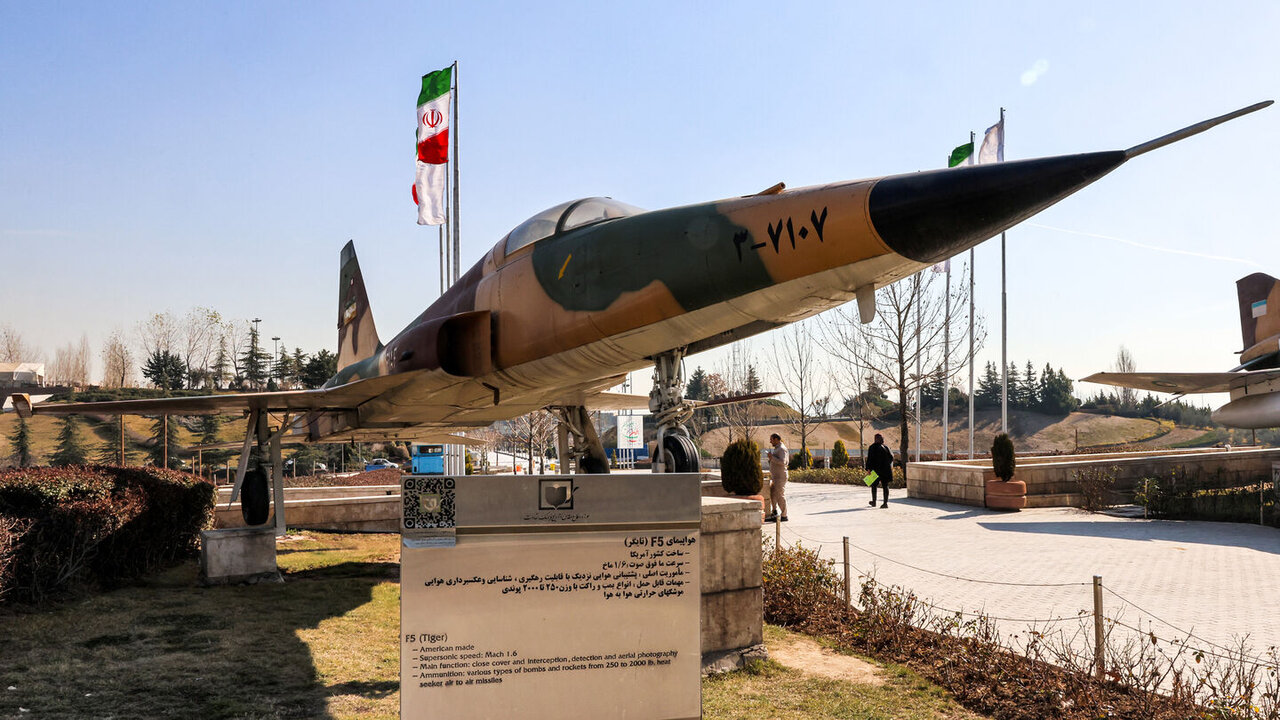Visit war machines on display at Tehran museum

TEHRAN - Museum of the Islamic Revolution and Sacred Defense in Tehran offers one of the most comprehensive war tourism experiences in West Asia, inviting visitors to witness a remarkable open-air exhibition of heavy military equipment used during the Iran–Iraq War (1980–88), known domestically as the “Sacred Defense.”
Spread across a 22-hectare landscaped site, the museum’s expansive outdoor spaces present more than 60 major war machines--tanks, aircraft, artillery, helicopters, and other military vehicles--set against a backdrop of gardens, lakes, and architectural reconstructions that honor Iran’s wartime resilience.
As recently reported by ICOMAM Magazine, an official publication of the International Committee of Museums and Collections of Arms and Military History, this curated display of military hardware offers insight not only into the tools of war but also into the cultural memory and national narrative surrounding one of the 20th century’s most prolonged conflicts.

Highlights of the open-air spaces
Visitors to the outdoor exhibition can explore a wide range of historically significant military equipment, each representing different aspects of Iran’s defense capabilities during the eight-year war.
Tanks and armored vehicles
Chieftain Tank (UK): Once operated by Iran’s army, this formidable tank features a 120 mm gun with a range of over 22 km, advanced night vision, and nuclear-biological-chemical (NBC) protective systems.

T62, T55, and T64 Tanks (Soviet-made): Captured from Iraqi forces, these tanks showcase Soviet military engineering and include stabilizers, night-vision, and anti-NBC systems.
BMP-1 and MT-LB Personnel Carriers (Soviet-made): These amphibious vehicles carried troops across rough terrain and water, with onboard weapons capable of engaging infantry and armored targets.
Aircraft and helicopters
F-4 Phantom II & F-5 Tiger (USA): High-speed fighter jets equipped with a versatile arsenal for bombardment, interception, and reconnaissance.

MiG-21 (Soviet-made, captured from Iraq): A classic Cold War jet fighter, notable for its speed and maneuverability in air-to-air combat.
Bell 206, 205 & Cobra Helicopters (USA): Deployed for reconnaissance, troop transport, and precision attacks. The Cobra, with its 20 mm cannon and rocket pods, was particularly effective against armored threats.

Artillery and rocket systems
203 mm Propelled Artillery (USA): Still in service, this massive gun is capable of firing 93 kg shells over 16 km.
107 mm Rocket Launcher (Iran-made): A domestically produced multiple-launch system, capable of firing 12 rockets in under 10 seconds.
Naze’at Rocket (Iran-made): Iran’s first indigenous surface-to-surface missile, with a range of 150 km and mobile launch capabilities.

Air defense systems
14.5 mm Quad Anti-Aircraft Gun (North Korea) and 37 mm Anti-Aircraft Gun (Soviet/Chinese): Captured from Iraqi forces, these systems were used for low-altitude defense against enemy aircraft.

Recovery vehicles and support equipment
The are also a number of armored recovery vehicles including American-made ones, equipped with cranes and winches, that demonstrate the essential support role of military logistics.

A considerable experience
Beyond the open-air collection, the museum features immersive indoor exhibitions across seven halls. Visitors are introduced to the war’s timeline with audio-visual aids, archival footage, and interactive projections. A notable centerpiece is the Panorama Museum, which virtually recreates pivotal moments such as the liberation of Khorramshahr. The Hall of Butterflies, meanwhile, serves as a poignant memorial to fallen soldiers, displaying personal effects retrieved from the battlefield.
The museum’s Khorramshahr Mosque replica, adorned with turquoise and cream tiles, further embeds the spiritual and cultural symbolism of resistance into the visitor experience.
War tourism in Iran
With the Iran–Iraq War being the second-longest conflict of the 20th century, Iran’s war heritage sites are emerging as significant destinations for war tourism, dark tourism, and cultural education. Once the domain of conflict photojournalists, such destinations are now recommended in major travel guides for their historical and emotional depth.
The Museum of the Islamic Revolution and Sacred Defense is at the forefront of this trend, combining historical documentation with national storytelling, all within an accessible urban setting in Tehran. Its sophisticated presentation, interactive exhibits, and impressive outdoor armory provide both domestic and international visitors a unique chance to reflect on the human, technological, and cultural dimensions of modern warfare.
The museum is open year-round and is easily accessible from central Tehran. The vast grounds also include recreational areas, water features, and children’s play zones, making it suitable for both history enthusiasts and families.
AM
Leave a Comment